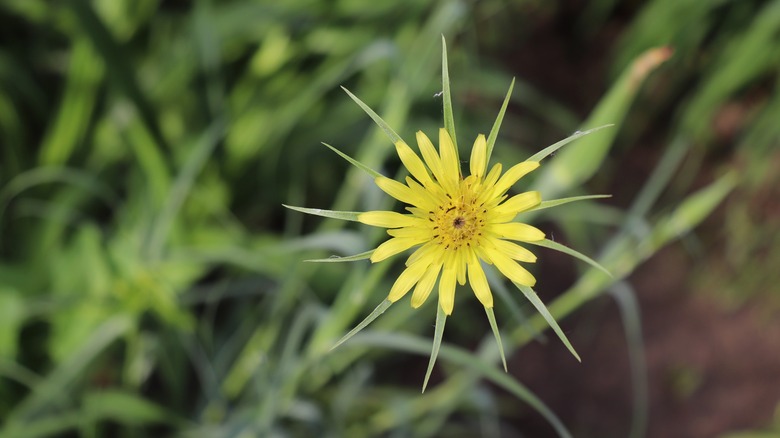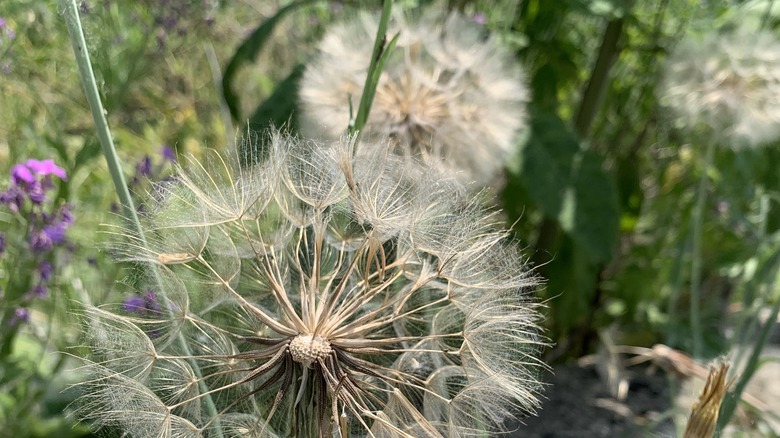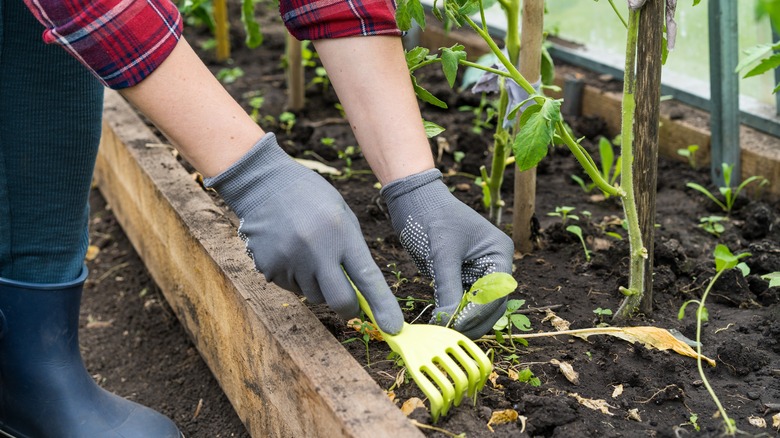How To Keep Yellow Salsify Out Of Your Garden
Have you spotted the "plant that follows the sun" in your garden? No, we're not talking about stunning sunflowers, though they also turn their flower heads to face that glowing orb in the sky. We mean yellow or western salsify, also known by various other, increasingly weird names like wild oyster plant and fistulous goatsbeard. The Latin name is Tragopogon dubius, the dubius distinguishing the plant from other Tragopogon species with "salsify" in their common name. Yellow salsify is found in almost every U.S. state and is generally considered invasive, though typically only mildly so. Ridding your garden of this successful plant, if you choose to do so, involves pulling it out, mowing over it, mulching, or dousing it in specific herbicides.
A native of Eurasia, yellow salsify has a long history in Europe, where it has been used as food since at least the Middle Ages. In fact, the term "goatsbeard" is said to have been coined by Theophrastus, a Greek philosopher from the 3rd century BCE. He thought the fluffy seedhead resembled a beard. The plant arrived in North America at the turn of the 20th century, likely introduced for its culinary uses and because the flowers are pretty. Yellow salsify hybridizes readily with other salsify varieties, and the U.S. now has a few native varieties, like Tragopogon mirus and Tragopogon miscellus.
Grows like a weed
Yellow salsify pops up in unkempt fields, vacant lots, and the edges of transport corridors (the gravel-covered shoulders of railway tracks and roads). It thrives in full sun. The plant is almost always a biennial. In the first year, it resembles a rosette of leaves growing close to the ground. It sends up long, grass-like leaves in its second year, quickly followed by flower stalks in mid-spring to early fall. The flowers look a bit like yellow daisies and have distinctive floral bracts — long leaf-like structures extending past the petals. Once pollinated, the flowers transform into a puffy white seedhead that looks like an enormous dandelion puff. Like those dandelions in your lawn, the seeds have little parachutes, helping them to catch the wind to new locales.
Despite its loose pest status, yellow salsify has some benefits for the ecosystems it invades. The flowers feed pollinating insects and nectar-feeding birds. Mammals big and small — gophers, mice, squirrels, rabbits, deer, elk ... even grizzly bears — feed on the flowers and leaves. Ground birds like grouse, quail, and turkeys eat the seeds. Because it tolerates poor soils and dry conditions, it's also considered a "nurse plant," protecting against soil erosion and nutrient loss.
A salsify-free garden
However, there are good reasons why the Alaska Center for Conservation Science at the University of Alaska Anchorage gives this plant a 50 out of 100 invasiveness rank (100 being highly invasive). Once established in an area, yellow salsify spreads quickly, forming close-packed clusters — almost a monoculture — that crowd out other plants. It's successful on farmland because domesticated animals like cows and sheep find the bitter leaves unpalatable. Yellow salsify also takes water from other plants during droughts. All that to say, this plant isn't something you want in your garden beds.
Tackle yellow salsify before it goes to seed for best results. This means pulling or digging plants out of the ground by hand — being careful to get all the deep tap roots — and mowing over flowering plants. "Burying seeds greater than three inches deep prevents emergence, so tilling may be effective," writes Jane Mangold for Montana State University. Another option is to apply a deep layer of mulch (at least 3 inches) to your beds. You may also be able to limit the spread of yellow salsify using smart planting strategies. A 2007 study published in Weed Science found that seeds couldn't travel far when the plant grew among tall vegetation. Large infestations may require chemical controls. Use broadleaf herbicides like dicamba and glyphosate on young plants (applied to the middle of the rosettes because these herbicides may damage other plants) and pre-emergent herbicides on the seeds in the soil.


